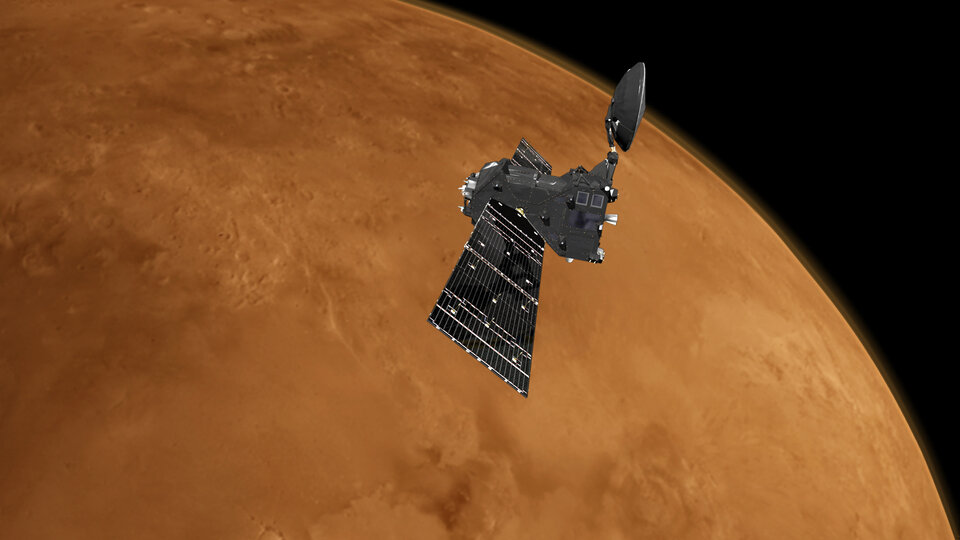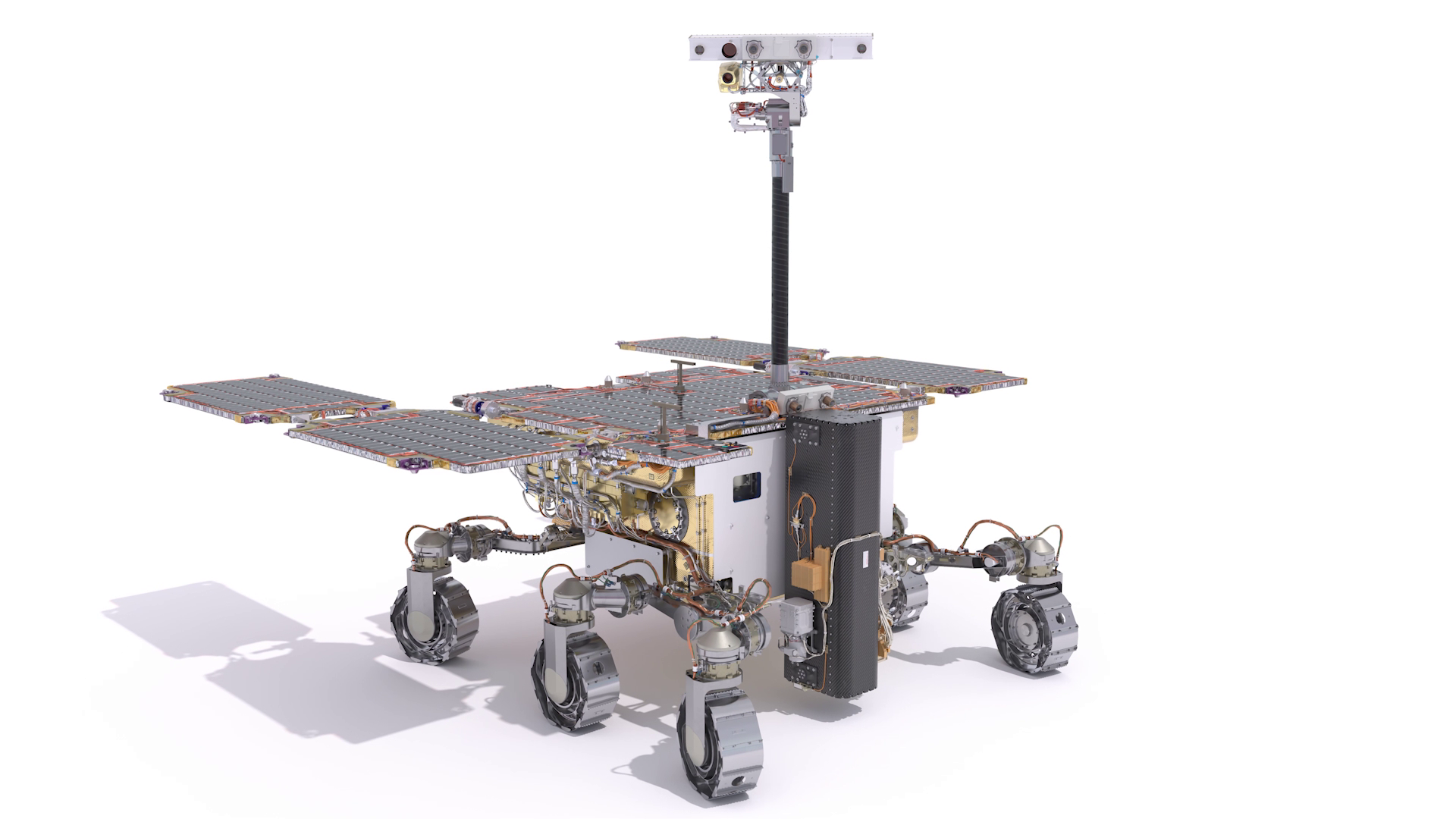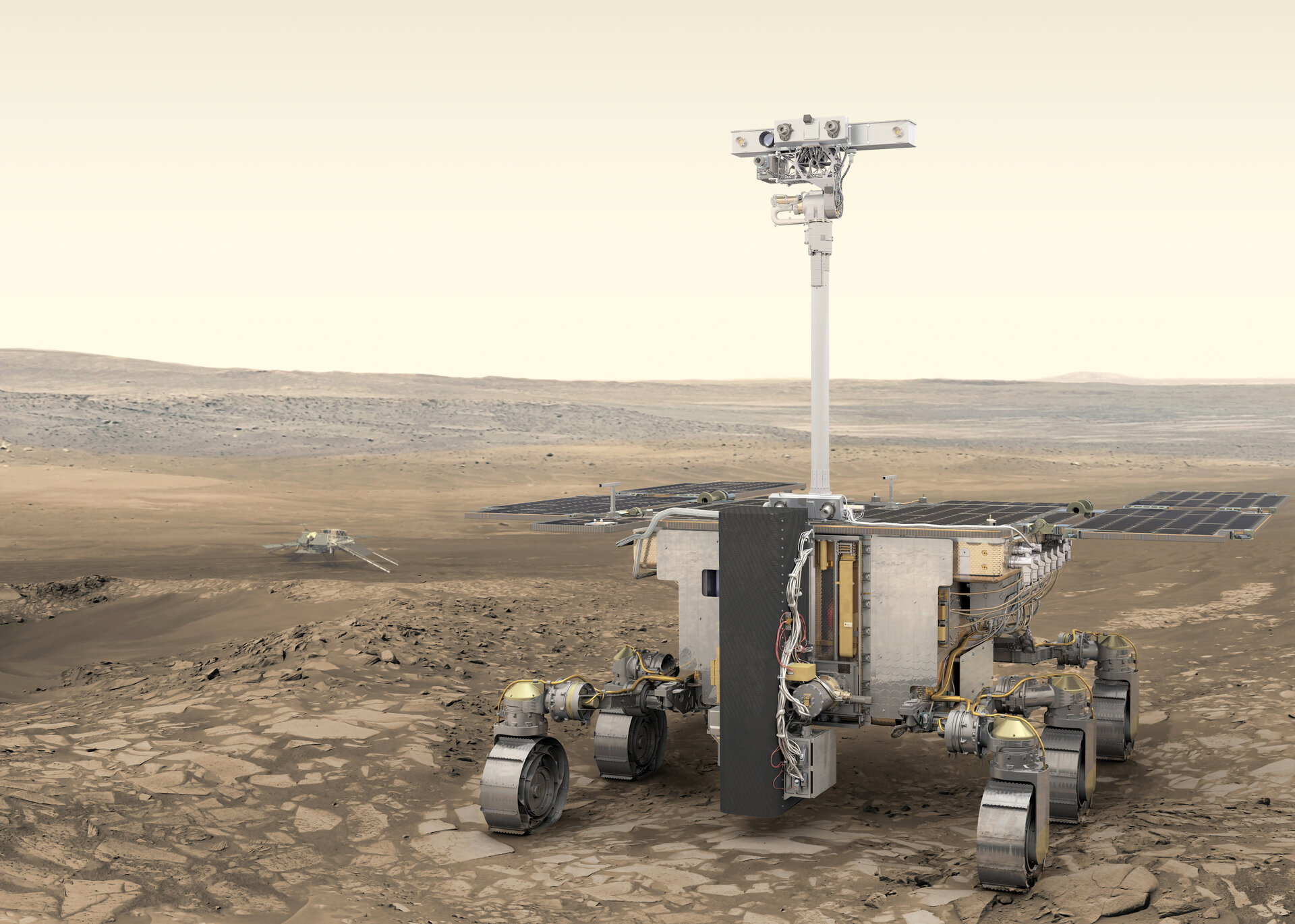ExoMars Factsheet
An overview of the ExoMars mission
Note: this page was updated March 2022 when the second part of the ExoMars mission was put on hold. This FAQ serves to answer the current status (as of early 2024) of the ExoMars Rosalind Franklin mission, and the way forward for Europe’s exploration efforts to Mars and beyond.
Name: ExoMars
Mission: To address the question of whether life has ever existed on Mars.
The ExoMars programme consists of two missions: the Trace Gas Orbiter (TGO) with an Entry, Descent and Landing Demonstrator Module, Schiaparelli, which launched in 2016, and the second, featuring ESA's Rosalind Franklin rover (launch window under review).
From orbit, TGO’s main objectives are to search for evidence of methane and other trace atmospheric gases that could be signatures of active biological or geological processes. With Rosalind Franklin’s unique drilling capabilities, the search for life will even extend underground, away from the harsh radiation conditions the surface is exposed to today.
Launch date: Trace Gas Orbiter: 14 March 2016; the launch window for the ExoMars surface mission is under review
Launch vehicle: TGO: Proton-M/Breeze-M; Rosalind Franklin TBC
Launch mass:
TGO mission: 4332 kg (including fuel) comprising the orbiter (3732 kg, including 113.8 kg science payload) and Schiaparelli (577 kg)
Rover: 310 kg
Dimensions:
TGO: 3.5 x 2 x 2 m with 17.5 m solar arrays tip-to-tip; Schiaparelli: 1.65 m diameter (2.4 m with heat shield)
Rover: 2 m high x 2.5 m wide
Journey and arrival milestones:
TGO mission:
Launch date: 14 March
Orbiter insertion into Mars orbit: 19 October 2016
Aerobraking: March 2017 - March 2018
Science phase begins: March 2018
Surface mission: TBC

Science instruments
TGO instruments:
ACS: Atmospheric Chemistry Suite
CaSSIS: Colour and Stereo Surface Imaging System
FREND: Fine Resolution Epithermal Neutron Detector
NOMAD: Nadir and Occultation for MArs Discovery
More info
Schiaparelli instruments:
AMELIA: Atmospheric Mars Entry and Landing Investigation and Analysis
COMARS+: Combined Aerothermal and Radiometer Sensors instrumentation package
DeCa: Descent Camera
INRRI: INstrument for landing-Roving laser Retroreflector Investigations
DREAMS: Dust Characterisation, Risk Assessment, and Environment Analyser on the Martian Surface
(Note that Schiaparelli did not land successfully so not all instruments were used; AMELIA and COMARS+ returned important data from the descent. More info)
Rover instruments:
Adron: a neutron spectrometer
CLUPI: Close-UP Imager
Enfys: Infrared Spectrometer for ExoMars
Ma_MISS: Mars Multispectral Imager for Subsurface Studies
MicrOmega: visible plus infrared imaging spectrometer
MOMA: Mars Organic Molecule Analyser
PanCam: Panoramic Camera
RLS: Raman Spectrometer
WISDOM: Water Ice and Subsurface Deposit Observation On Mars


Access the video
Partnerships:
The industrial teams behind the mission elements involve companies across more than 20 countries, led by the prime contractor, Thales Alenia Space Italia. ESA's rover is developed under the leadership of Airbus, UK. The ExoMars rover has nine instrument payloads with principal investigators from seven countries. NASA provides the MOMA instrument in the rover.
Mission facts:
- ExoMars gets its name from the term ‘exobiology’, the study of life beyond Earth
- Trace gases make up less than 1% of the total atmospheric inventory of a planet
- TGO will detect atmospheric trace gases with an improved accuracy of three orders of magnitude compared to previous measurements
- TGO’s successful arrival at Mars marks the second time that ESA has placed a spacecraft into orbit around the Red Planet, after Mars Express
- TGO will act as a relay for the rover mission
- Rosalind Franklin will be Europe's first rover on Mars
- The rover has a unique drill to collect samples 2 m below the surface
- The rover has unique driving skills such as wheel-walking, to overcome challenging terrain including sand traps
- The rover can cover between about 50 and 100 m per martian day
- The second main parachute, at 35 m wide, is the largest to fly on Mars














 Germany
Germany
 Austria
Austria
 Belgium
Belgium
 Denmark
Denmark
 Spain
Spain
 Estonia
Estonia
 Finland
Finland
 France
France
 Greece
Greece
 Hungary
Hungary
 Ireland
Ireland
 Italy
Italy
 Luxembourg
Luxembourg
 Norway
Norway
 The Netherlands
The Netherlands
 Poland
Poland
 Portugal
Portugal
 Czechia
Czechia
 Romania
Romania
 United Kingdom
United Kingdom
 Slovenia
Slovenia
 Sweden
Sweden
 Switzerland
Switzerland

























